Bench Stool: Project Info
Posted 27 November 2013
This is the introductory page for a paid video series. Want to watch more of this project? Select the best option below to get started.
Cutting list:
| Name | Qty | Size |
| Leg | 4 | 1 ½” x 1 ½” x 27″ (38 x 38 x 686 mm) |
| Top Rail | 4 | 7/8″ x 3″ x 10 ¼” (22 x 76 x 260 mm) |
| Lower Front and Back Rail | 2 | 7/8″ x 3″ x 14 1/8″ (22 x 76 x 360 mm) |
| Lower Side Rail | 2 | 7/8″ x 3″ x 13 1/2″ (22 x 76 x 345 mm) |
| Seat | 1 | 1 ½” x 14″ x 18″ (38 x 355 x 455 mm) |
Note: It is good to laminate the seat, as it is more likely to stay flat. You can use 5 or 6 sections of 2×3’s that are 18″ long.

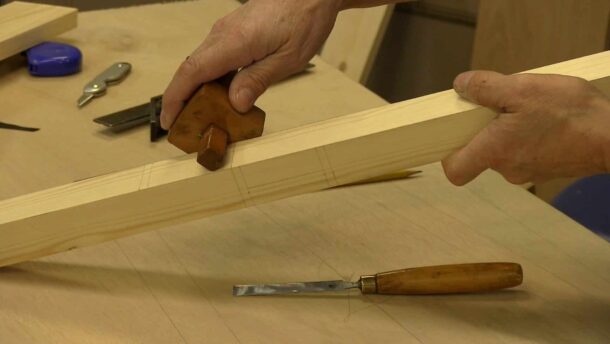
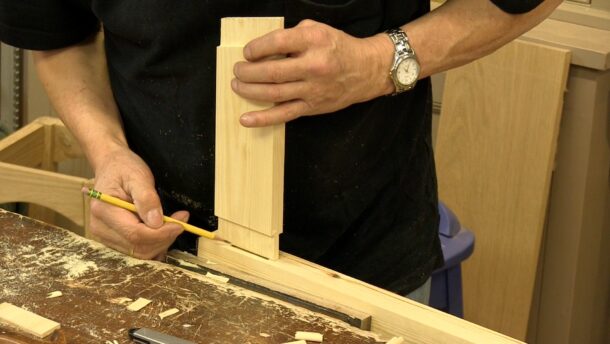
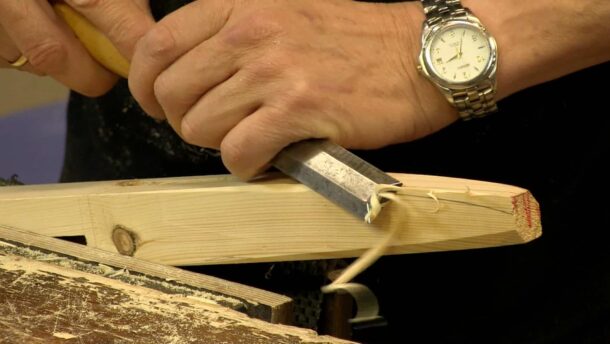
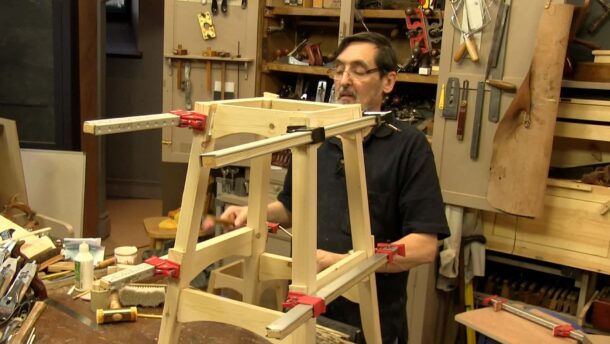
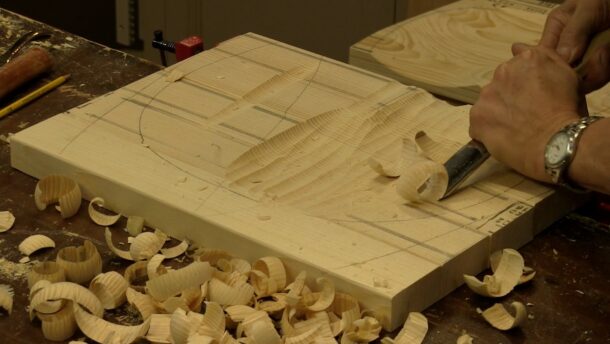
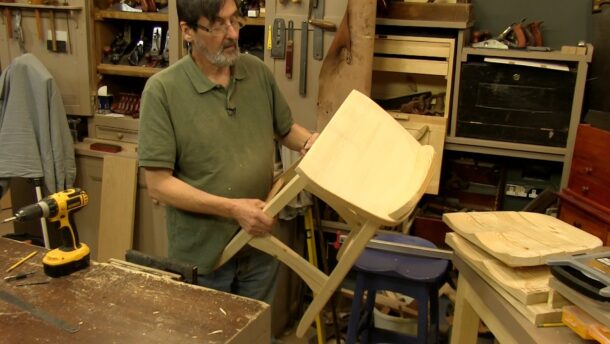
Nice, Nice, Nice looking forward to this one guys 😉
Like wise I am so looking forward to this. I have ( 2 ) stools in my shop ( 1 ) metal and ( 1 ) wood with a back and it swivels. Non are “comfortable” or the right height.
Steve
i like the shape of this stool it looks like its stackable also which is a bonus in a small space
EVERYTHING is a different aspect of woodworking than I’ve ever done before.
Looking forward to this.
Can anyone please help with an explanation
Of the drawing and oblige octoplod1
Does anyone know if there is a clear drawing of the component parts and assembly ?
Look just below the Download Video button.
Hi guys/gals could anyone explain the Module Key to this Newbie Woodworker?
Many thanks.
Norman D
Hi Norman,
Could you clarify your query? I’m not sure I understand.
Kind Regards,
Izzy
Norman,
If you notice the only inch measurement called out is the height. The rest of the “measurements” are proportional and laid out as segments of the major dimension D. So the stool can be upsized or downsized to your own height I as preferred. Probably would be best used with full sized plans. I’ve not used this technique but can see its usefulness in a project such as this.
This would work well for my kitchen breakfast bar.
I was watching the video so I could build a stool but I just do not understand the measuring system used(module key), I understand that there is one dimension shown 27.5 and if looking at D there are 5 D’s for that length, which means that each D is 5.5 but then I look at dimension for the seat depth it shows 4 parts of the length D and is only half which would mean to me that the depth is 11 but the measurement that Paul has here is 14. I don’t understand how that is. Please explain how to use the Module Key I want to make a smaller stool but have no idea what to do here about measurements. Any help please.
Walt
You might be. BEtter served with the cutting list just above the videos.
Is there any place where the proportional dimensions in the drawing/plan is explained? It is certainly confusing to me, though I’m an engineering. science, math person! I can get some correlation of the D dimensions and its divisions comparing with the cutting list, but what is the meaning of those semicircles? I know they span 2 divisions, but I can’t tell if the divisions are quarter or third type divisions…?
Not sure where I found this, it was long ago, likely somewhere in the form here. From where it was I copied it into a file. Here it is below. Hope it helps.
happy there is some interest in this. I’ll try and break it down for you.
1. determine the seat height that you want (i.e. 27.5″) but it could be any height you want.
2. divide that height by (5) this will give you (D)
3. set up the ‘Module Key’
4. establish a ‘Baseline’ and ‘Centerline’
5. use the ‘Module Key’ to set a pair of dividers and step of the distances as indicated. (it helps to have a few pair of dividers)
The semi-circle notation indicates that the division for the adjacent divisions are equal to each other.
The drawing actually shows 1/2 of the front view and 1/2 of the side view of the stool. So the width of the top at the front is 10/3 of (D) and depth of the top on the side is 8/3 of (D).
A note on dimensions. There are almost no shop drawings from antiquity. There are however ‘Pattern Books’. These are scaled drawings of items but no dimensions. There is sometimes a key often there is not. You used a pair of dividers, often proportional dividers, to establish a full size sketch to build from. From there you would directly mark the sizes of your stock or you would create a ‘story stick’ and use that to transfer sizes. With this method craftsman could create items to fit a particular space or to accommodate available materials.
David, thank you so much for your help. The drawing now makes sense. The semicircles suggests the use of dividers. From a printout I was trying to infer the dimensions of the subdivisions using fractional inches, which was hard, but I realize now using millimeters is much easier. Your explanation makes complete sense. Thank you again.
Depending on what you start from you get different results.
1. determine the seat height that you want (i.e. 27.5″) but it could be any height you want.
2. divide that height by (5) this will give you (D) => 5.5″
3. set up the ‘Module Key’
The leg is 1/4 D square. 1/4 D = 5.5/4 = 1 3/8 or 35 mm (the cutting list says 1.5 or 38 mm)
Top rail is 1/2 D= 2.75 or 70mm (cutting list says 3″ or 76 mm)
The same for the other rails.
BUT if I go by the width of the legs on page 1, which is 1/4 D: 1.1/2″ (38mm) the height of the stool is 5D or 20x 1 1/2=>30″ (760)
On page 1 of the drawings the heigth of the stool is 27 1/2 or 5D.
On page 2 the length of the leg is 5D (without the seat of 1/4 D which would make the heigth of the stool 28 3/4)
What did I miss?